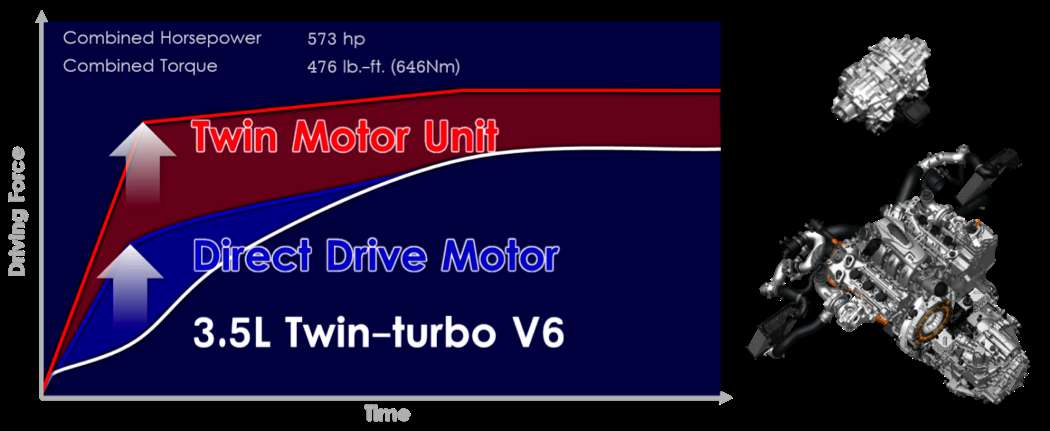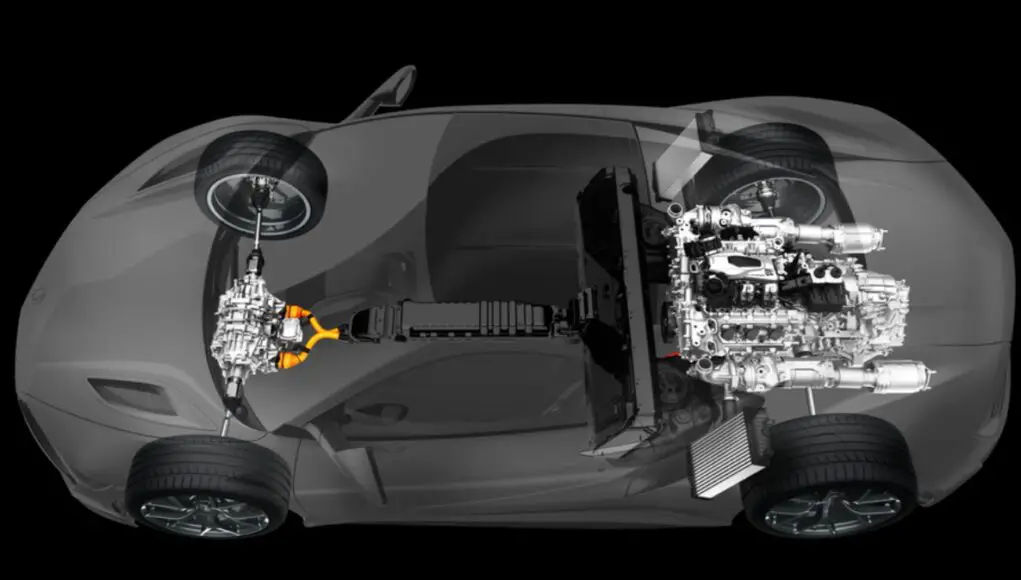Did the hybrid system add enough power to offset the hundreds of pounds added?
Scrolling through Twitter earlier today and I came across an interesting response against the new (soon to be discontinued) NSX’s hybrid powertrain. The claim was it probably wasn’t worth it for Acura to add all that heavy complexity for however much power it added.
After taking a beat before defending the NSX in a passion-filled response, it’s clear this was an internet troll. But it cast a shadow of doubt over the NSXs mode for power delivery.
Acura’s engineers weren’t foolhardy enough to add all that weight only to make it faster without, right?
Yes, the NSX is faster with its elegant, yet complicated, hybrid powertrain.
Here’s how.
The twin-turbocharged NSX’s V6 engine makes 500 HP and 406 lb-ft.
Paired to that engine is a hybrid unit comprised of…
- a 35.7-pound rear direct drive motor nestled between the twin-turbocharged V6 engine and transmission,
- a 90-pound 1.3 kWh lithium ion battery pack,
- a pair of twin-traction motors shared for each front wheel
- and all the supporting wiring and ECUs to make it all work.
Combined system output 573 HP and 476 lb-ft.
If the NSX weighs 3,808 pounds, its power-to-weight ratio is .150 hp/lb or 6.7 pounds per HP.
According to Autocar.UK the entire hybrid system weighs 330 pounds. If we stripped the NSX of all that excess weight and added power, the new power-to-weight ratio is .143 hp/ib or 7 pounds per HP.
The hybrid power unit improves power-to-weight ratio, making for an overall faster NSX.
Benefits of a hybrid powertrain.
While turbocharged engines naturally have broad powerbands, especially in the lower RPM range, there are still areas under the curve where electric motors can help.
“Every time the driver makes a power demand, the TMU and the Direct Drive Motor immediately augment power production from the twin-turbocharged V6 engine, using the instantaneous torque that is an inherent characteristic of electric motors.”
This graph should make that point more evident.

And thanks to individual motors at each front wheel, the NSX can achieve true torque vectoring apportioning torque to “create a yaw moment enhancing cornering performance.”
NSX vs NSX GT3 EVO (No hybrid system)
Acura makes a racecar version of the NSX for GT3-spec race series dubbed the GT3 EVO. Per race series rules, no hybrid powertrains can be used so this special NSX not only has less power than the standard NSX, it weighs a lot less.
Acura has upgraded turbos and intercoolers upping engine power to 550 HP and, devoid of excess weight, it only weighs around 2,800 pounds, giving this NSX an astounding .196 hp/lb or 5.1 lbs/hp power-to-weight ratio.
With road-sucking aero, naturally, the GT3 EVO is much faster than a bog-standard NSX around a track. Acura actually demo’d that for us at Mid-Ohio video below.
But, in one measure, a blast to 60 MPH, the regular NSX is actually faster than the racecar…by a lot.
The stock NSX can hit 60 MPH in 2.9 seconds.
Without its torque-filling hybrid system, although this racecar weighs 1,000 pounds less and has a more powerful gas engine, 0-60 MPH takes 4.35 seconds.
That is definitive proof that, in normal, everyday driving, the regular NSX would absolutely be slower without its hybrid system.




Disagree,
In a straight line, yes a hybrid is faster. On the track not so much. There is a reason why you see few hybrids on a track day. For most tracks (especially tighter more technical ones) weight is the enemy. 1000 hp Vipers get spanked by Porsche GT4’s, used Lotuses, and even stripped out and turboed Miata’s. Yes hybrids add a ton of power and low end torque, but they add weight. Also they suck as track cars because they add a ton of complexity. Not many track mechanics will be able to do a pre-race or pre-track day inspection let alone fix something that breaks on one of these cars. For real enthusiasts who take their cars to the track (at least for those who make less than 7 figures a year), Hybrids are complicated, heavy, and impractical. I’d take the GT3 car over the Hybrid any day, even if I had to trailer it to where I was going. Better yet, give me a slightly less expensive option that has none of the hybrid stuff in it and I’ll drive it to the track and run what I brung. A new NA petrol NSX would be an instant star on any track day.